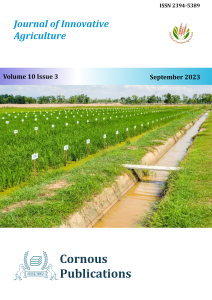
Journal of Innovative Agriculture
Peer Reviewed Open Access Journal
ISSN: 2394-5389 NAAS: 4.05
Submit Manuscript
Peer Reviewed Open Access Journal
ISSN: 2394-5389 NAAS: 4.05
Submit ManuscriptOPEN ACCESS | Published on : 30-Sep-2023 | Doi : 10.37446/jinagri/rsa/10.3.2023.1-21 | Pages : 1-21
OPEN ACCESS | Published on : 30-Sep-2023 | Doi : 10.37446/jinagri/rsa/10.3.2023.22-36 | Pages : 22-36
OPEN ACCESS | Published on : 30-Sep-2023 | Doi : 10.37446/jinagri/rsa/10.3.2023.37-47 | Pages : 37-47
OPEN ACCESS | Published on : 30-Sep-2023 | Doi : 10.37446/jinagri/rsa/10.3.2023.48-63 | Pages : 48-63
OPEN ACCESS | Published on : 30-Sep-2023 | Doi : 10.37446/jinagri/ra/10.3.2023.1-13 | Pages : 1-13
